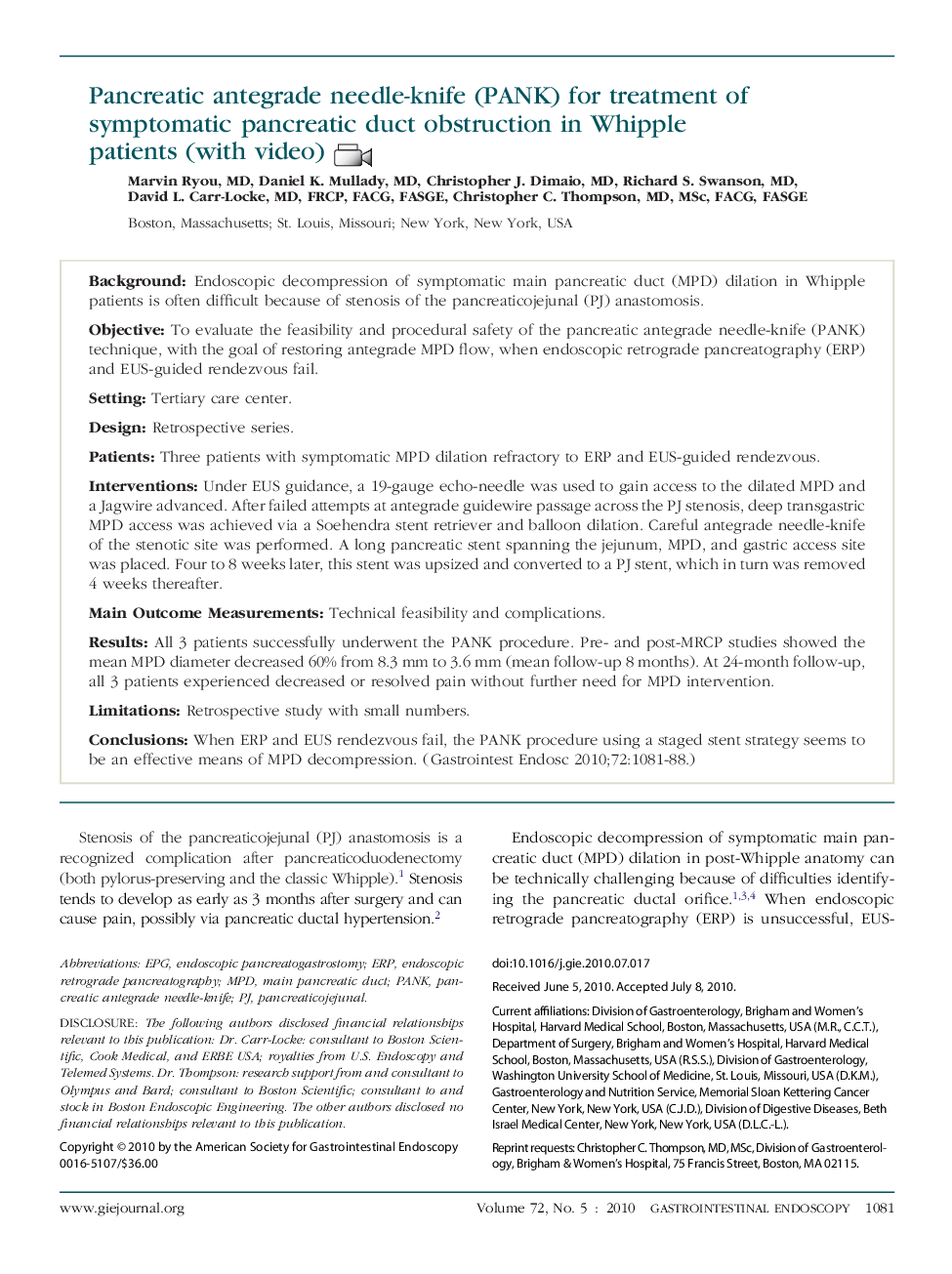| Article ID | Journal | Published Year | Pages | File Type |
|---|---|---|---|---|
| 3306409 | Gastrointestinal Endoscopy | 2010 | 8 Pages |
BackgroundEndoscopic decompression of symptomatic main pancreatic duct (MPD) dilation in Whipple patients is often difficult because of stenosis of the pancreaticojejunal (PJ) anastomosis.ObjectiveTo evaluate the feasibility and procedural safety of the pancreatic antegrade needle-knife (PANK) technique, with the goal of restoring antegrade MPD flow, when endoscopic retrograde pancreatography (ERP) and EUS-guided rendezvous fail.SettingTertiary care center.DesignRetrospective series.PatientsThree patients with symptomatic MPD dilation refractory to ERP and EUS-guided rendezvous.InterventionsUnder EUS guidance, a 19-gauge echo-needle was used to gain access to the dilated MPD and a Jagwire advanced. After failed attempts at antegrade guidewire passage across the PJ stenosis, deep transgastric MPD access was achieved via a Soehendra stent retriever and balloon dilation. Careful antegrade needle-knife of the stenotic site was performed. A long pancreatic stent spanning the jejunum, MPD, and gastric access site was placed. Four to 8 weeks later, this stent was upsized and converted to a PJ stent, which in turn was removed 4 weeks thereafter.Main Outcome MeasurementsTechnical feasibility and complications.ResultsAll 3 patients successfully underwent the PANK procedure. Pre- and post-MRCP studies showed the mean MPD diameter decreased 60% from 8.3 mm to 3.6 mm (mean follow-up 8 months). At 24-month follow-up, all 3 patients experienced decreased or resolved pain without further need for MPD intervention.LimitationsRetrospective study with small numbers.ConclusionsWhen ERP and EUS rendezvous fail, the PANK procedure using a staged stent strategy seems to be an effective means of MPD decompression.
